Murphy family
from Christendom, Co.Kilkenny, Ireland
John Murphy 1831-1909

John Murphy was my great grandfather on my father’s maternal side. He was born in 1831 in Kilkenny City, County Kilkenny and baptised in April 1831 at St. Canice Church, Kilkenny City. I am not sure who his parents were as there were two John Murphys baptised in April 1831 in that church. I am still investigating as to which are John’s parents. I know his father was an inn keeper and he had a brother named Oliver who was ordained a priest in May 1850 in Kilkenny and later that year became parish priest of St. Mary’s, Pembroke Dock, Wales. He remained there until his death on 14 March 1894.
John attended St. Kieran’s College, Kilkenny, and it was said “His father supplied whisky to the college … for medicinal purposes, of course …. to pay part of his fees”! About 1855 he obtained a position as clerk working for the Central Ireland Railway in Kilkenny and was later posted to Waterford.
On 7 September 1857 he married Margaret Delany in St. John’s Church, Kilkenny City. She was also from Kilkenny and was 21, five years younger than John. Their first child, Michael, was born 3 years later on 5 September 1860. It may have been that she had other children before Michael who did not survive. [My father said John had 18 children in total but only 14 are recorded] John and Margaret had six children.

Entry in the parish register of the marriage of John Murphy to Margaret Delaney on 7 September 1857
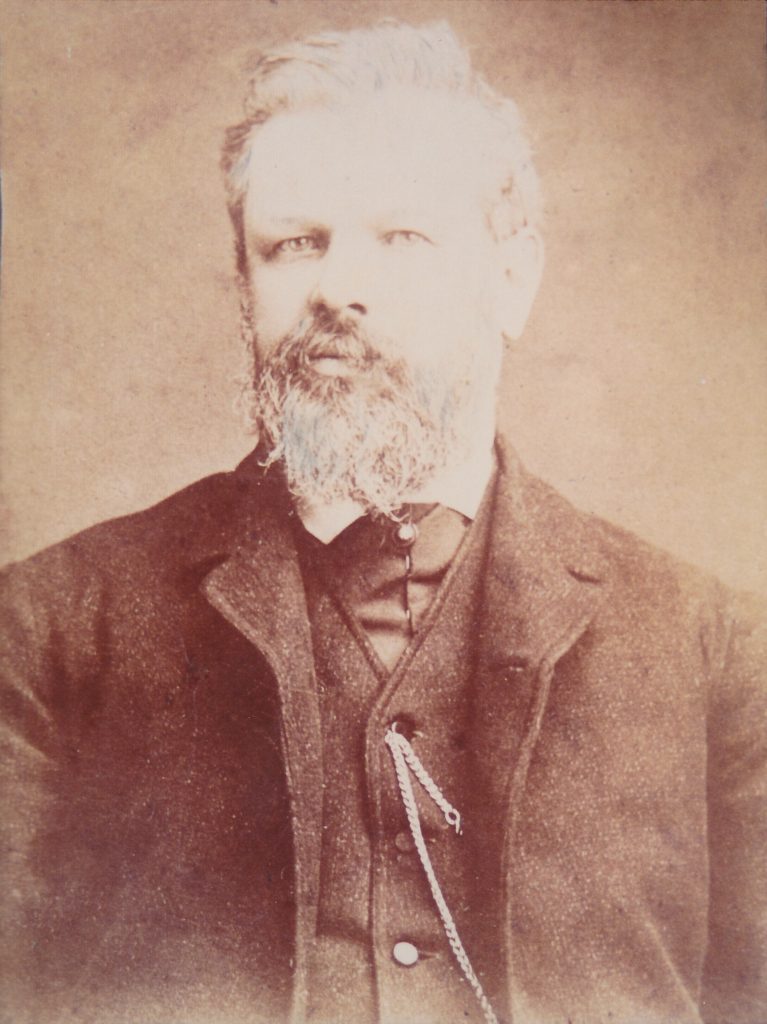
John Murphy 1831 – 1909

Christendom House, Ferrybank, Co. Kilkenny.
The family left Kilkenny for Waterford between 1865 and 1866 since their eldest daughter was born in Kilkenny in 1865 and died in 1866 in Waterford. Not too long after moving to Waterford John purchased Christendom House, a fine old Georgian house beside the River Suir, on the Kilkenny County side of the river. It had a long avenue up to the house, a walled garden, several out buildings and a fair amount of land where, in later years, in one area it was large and flat enough for his sons to play cricket.
In July 1872 Margaret died and in 1875 John married Elizabeth Doran, who was known as Lizzie and recorded in the marriage index as Eliza. She was born in 1853 at Littlefield, Co. Tipperary, to Patrick Doran and Maria Dempsey. John and Lizzie had eight children of whom the eldest girl, Mary Margaret or Maud as she liked to be known, was my grandmother.

Entry in the parish register of the baptism of Elizabeth Doran on 6 April 1853
I don’t know exactly when he formed his company Murphy Brothers Limited but by about 1875 he became a “Railway Carrier” as he took over the railway company’s cartage business in Waterford running a horse drawn transport concern in the south east of Ireland. He had stables for 200 dray horses in Salvation Lane, Ferrybank, Waterford. He even employed his own vet “…. there are no records of a company doctor but then it would have cost money to buy a horse but labourers were freely available without charge!” [this was a comment by his grandson Chris Murphy]
In the late 1880s he leased a wharf for a peppercorn rent on the northern side of the river. He imported coal and timber and exported mainly potatoes. The coal was distributed to towns up to 50 miles distance from Waterford. Later he bought his own steamers. Eventually he had eight steamers. He also had a coal yard in Limerick. He built a saw mill, a box factory and a salt store. He installed a coal briquette plant at his coal yard using slack from his own cargoes. He was very successful.
It was most probably John’s intention to leave the business between his sons, hence his company’s name Murphy Brothers Ltd. Most of his sons worked in the business at some stage but many did not stay most probably due to the attitude of their father who was controlling and autocratic. He never delegated responsibility to anyone. His eldest son, Michael, did stay on working in the business but was never given any responsibility or instructions on running the company. He was belittled by his father in front of the workers.
In 1899 John suffered a severe stroke leaving him unable to speak meaningfully. Michael had to take charge of the company but his father kept a strict eye on him and visited the office, when he was able, but could only grunt his instructions. It would have been a very difficult time for Michael.
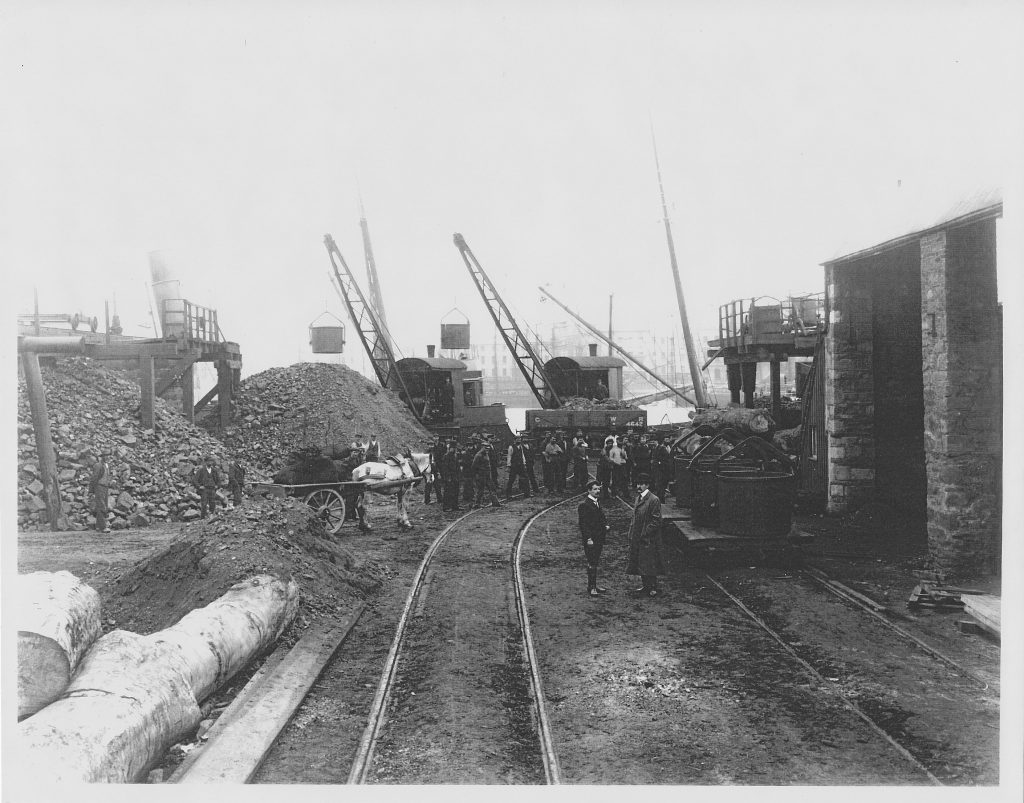
Murphy Brothers Limited coal yard.

Window in the Chapel of Ease, Ferrybank, dedicated to Lizzie Murphy who died 15 January 1906
In 1906 Lizzie died at the age of 53. She did like to drink and John had to lock her in her room on occasions to keep her from temptation. Her grandson, Chris Murphy, said she was remembered for her words “I’d go the the gates of hell for a drink”. John had a stained glass window placed in the Chapel of Ease, their local church, in her memory.
About a year or so before he died John made a huge deal with two railway companies wanting to put a rail link in from Rosslare and New Cross to Waterford which would have crossed his land. He agreed to sell the land in question promptly but on the condition they bought his cartage business as well, because he knew there would have been no future in it. He received £57,000 for the land and cartage business.
John died on 9 February 1909 and was buried at the Chapel of Ease, Ferrybank.
He made a will on 22 January 1909, a few days before he died, leaving everything to Michael apart from non-voting preference shares, in the company, to each of his children except three – John, Frank and Christina. John had become a priest, Frank (Francis Daniel) was working for the Foreign Office in Sudan and Christina had become a nun. No doubt he considered they did not need anything. He had one thousand non-voting preference shares which were nominally valued at ten pounds each. Nine children received one hundred shares each except my grandmother who only received fifty shares, presumably because she was married. The last fifty shares were to pay for the masses to be said for the repose of his soul and those of his two wives.
When John died the company had no depts or mortgages. Within six months after his death everything was mortgaged including Christendom House. Michael changed the company name to Murphy & Company Ltd. The shares became valueless due to Michael making bad decisions regarding the company which eventually caused its total decline.
So nobody had anything in the end.
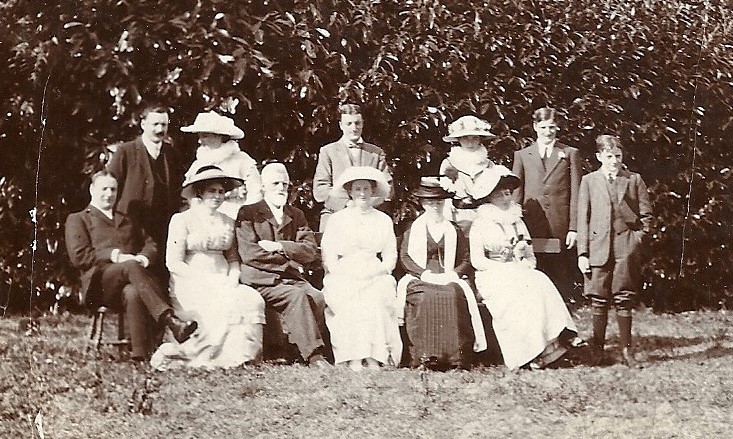
Murphy family in the late 1890s
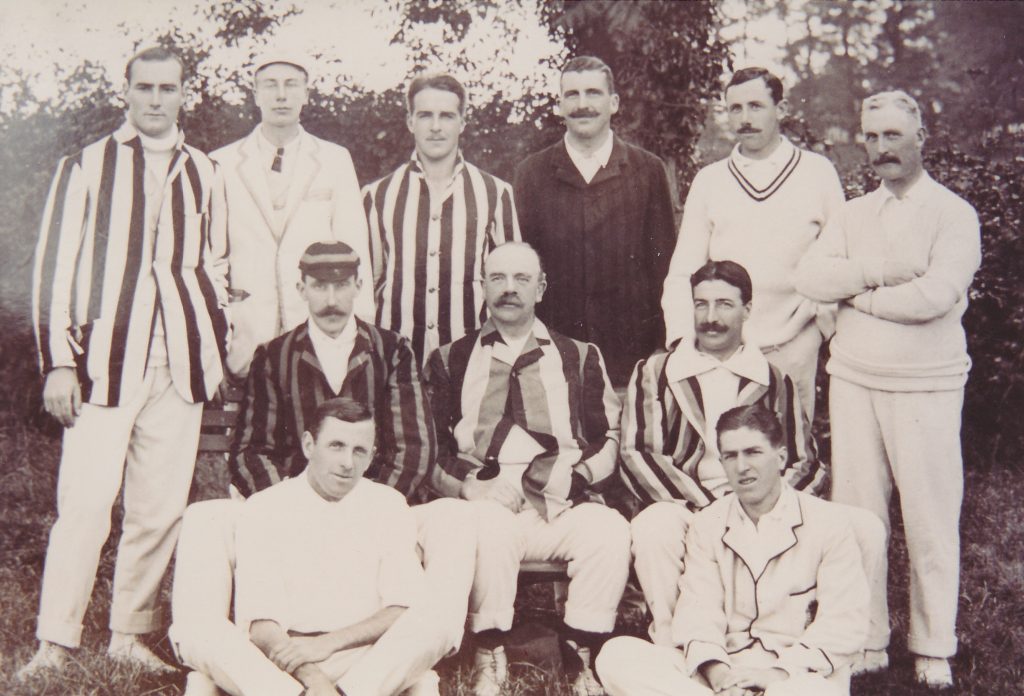
Christendom cricket players
Children of John Murphy:
With Margaret Delany;
Michael Murphy 1860 – ?
John Joseph Murphy 1863 – abt.1923
Catherine Murphy 1865 – 1866
Francis Daniel Murphy 1868 – ?
Edward Thomas Murphy 1869 – ?
Christina Mary Murphy 1871 – 1930
With Elizabeth Doran;
William Francis Murphy 1875 – 1960
Patrick James Murphy 1876 –
Vincent Joseph Murphy 1877 – 1913
Christopher Aloysius Murphy 1881 – 1935
Joseph Vincent Murphy 1882 – 1965
Mary Margaret Murphy 1884 – 1955
Catherine Mary Murphy 1885 – 1961
Josephine Murphy 1889 – 1922
Sources:
From Christendom & Waterloo and A Bank Manager’s Bed: A True Story of Two Waterford Families by Chris Murphy
Legacy pages for the Murphy family
Mary Margaret (Maud) Murphy
1884-1955
Maud was my paternal grandmother. She was the eldest daughter from John Murphy’s second marriage to Lizzie Doran. She was born at Christendom House on 9 March 1884. She had nine older brothers four of whom were her half-brothers, and a lot older than her, and one older half-sister who became a nun when Maud was 13. She also had two younger sisters of whom Kitty was the closest to her. Her youngest sister, Josephine, died of the Spanish flu, at the age of 33, in London in 1922. Maud had a privileged upbringing as her father was a successful businessman. Her mother died when Maud was 22. I don’t know which school she attended.
I don’t know when or how she met Doctor Willie Deighan. Perhaps she was working in Dublin or met him through a friend. Possibly they met through her sister, Kitty, who was a nurse, and working in the same hospital as him.
They married in the Pro Cathedral, in Dublin, on 8 January 1908. She was 24. Her sister, Kitty, was a witness. Within a year Willie had obtained a job in Greenwich, London, and in February 1909 their first child was born, William Joseph Gerard, always known as Gerard. This was not the first time she had been to London. That occasion had been on one of her father’s ships and she had approached the city from the Thames. She then decided it was the city she wanted to live in.
In April 1911, when the census was taken, the family was living in Shoreditch, London. The census showed her mother-in-law, Mary Deighan, and her sister, Josephine, were staying with them. Also a friend or colleague of Willie, Irishman Dr. Jeremiah Grace, was also there on that night.
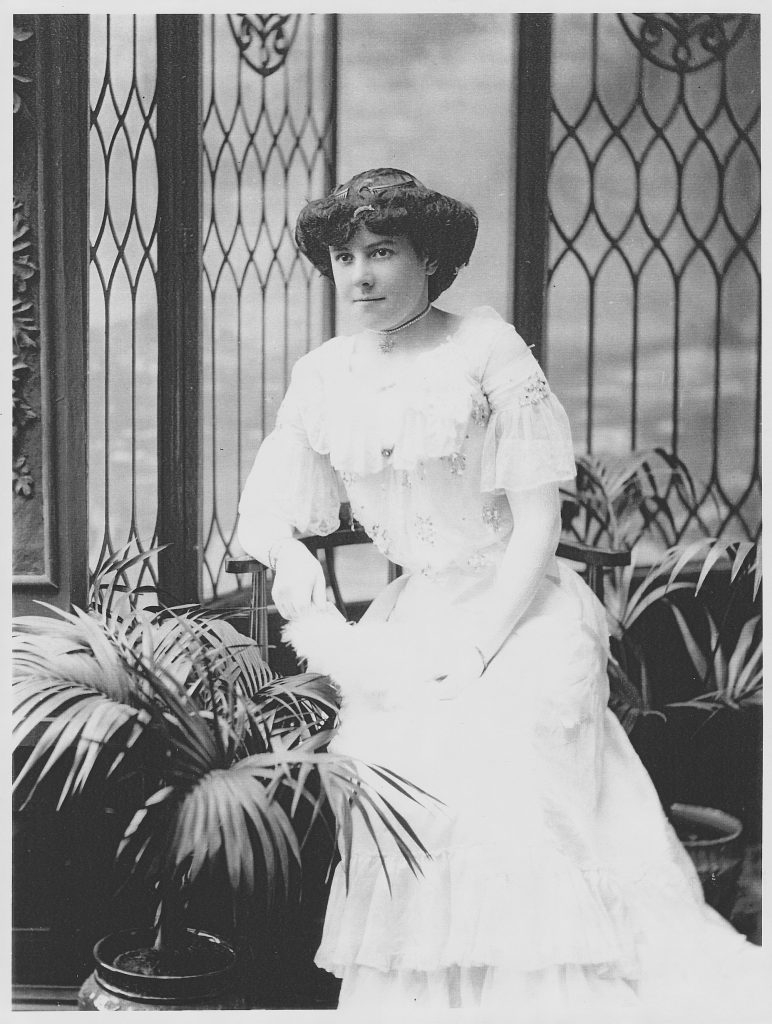
Mary Margaret (Maud) Deighan née Murphy 1884-1955
The family moved to 1 Clapton Square, Hackney, about 1913 as their second child, James Eric [my father], was born there on 30 March 1913. This was a lovely place to live. The square, which was laid out in 1816, is a public garden square and now a conservation area. The garden was just over the road and would have been an ideal place for Maud to take her young boys to play. They lived there until about 1919.
In 1915 Willie joined the Royal Army Medical Corps and left for Gallipoli on 28 July 1915 on the Royal Edward, a troop ship. In August, before it even reached Gallipoli, the ship was struck by a torpedo in the Aegean Sea. The ship sunk very quickly and many died but Willie was one of the lucky survivors. After many hours in the water he was rescued by the hospital ship Soudan which took 600 men rescued back to Alexandria. Later he was returned back to England and discharged from the Army in April 1917. The time spent in the sea greatly affected his health and he died prematurely due to this. It must have been a very worrying time for Maud as the disaster was printed in all the newspapers. I don’t know how long it was before she found out that he had been saved.
In 1920 the family was living at “Gascoyne”, Woodside Grange Road, Finchley, Middlesex and in January 1920 their daughter, Dorothy Mary Agnes, was born. She was named after Willie’s niece Mary Agnes, his sister’s eldest daughter.

Gerard and Eric about 1915
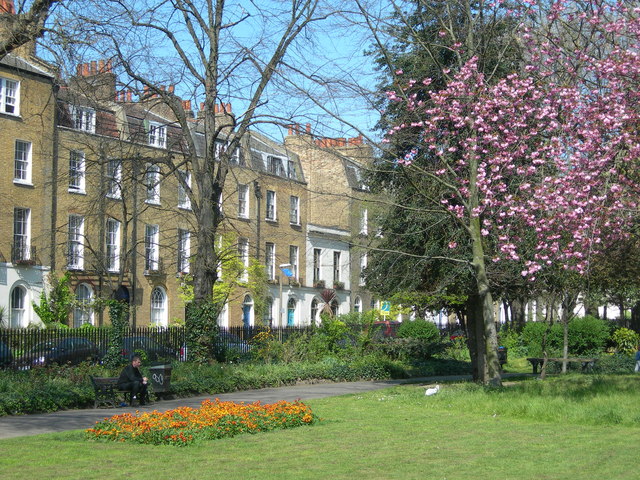
Clapton Square, Hackney

Report in The Times 18th August 1915
The family moved back to Dublin, most probably after the Civil War finished, towards the end of 1923 and lived at 2 Avoca Terrace, Blackrock. Whilst working in Dublin, Willie took more qualifications. They moved back to London about 1925/26 after, so the story goes, two men came looking for Willie. The family was out at the time but the maid recognised them as members of the IRA. Willie and Maud decided to leave Dublin as soon as possible for London. [The family story went that these men were threatening and worried Willie enough to leave Dublin with his family. Why they wanted Willie I do not know. They never found out the exact reason for the visit]
Willie set up a practice at 78 West End Lane, West Hampstead, which was a large house and was able to accommodate the family as well. He also had a practice at 82 Harley Street in central London.
Willie took his younger children to France on holidays and Cornwall but Maud preferred not to go possibly because Gerard was at home.
In 1936 Willie knew his health was failing and he negotiated the sale of his practice. He died in August and shortly afterwards Maud moved out with the children to 32 Cumberland Mansions, West End Lane, West Hampstead. However they weren’t there long because when the 1939 Register was taken Maud was living at 482 Finchley Road in an apartment above a shop. She spent WWII living there along with her children, except Eric for a while was working in Liverpool. In 1943 she had a lovely surprise. Two nephews, sons of her brother Joe, who were in the Canadian Navy visited her.
In 1945 her son, Eric, married Pauline Heckrath and moved into a house not too far away in Hilltop Road, West Hampstead. The house was within walking distance of 482 Finchley Road and very close to where Willie and she lived in West End Lane. In 1946 her first granddaughter was born.
In 1953 Eric and Pauline decided to move out of London to south Oxfordshire. They asked Maud to live with them and she said she would. However after they moved she said she had changed her mind and decided to stay in London.
She died on 7 December 1955. A requiem mass was held on 12 December at the Church of Sacred Heart, Quex Road, West Hampstead and afterwards she was buried in Hampstead Cemetery with Willie.

Mary Margaret (Maud) Deighan née Murphy during WWI

2 Avoca Terrace, Blackrock, Dublin. The house with the red front door.
Children of William Deighan & Mary Margaret Murphy:
William Joseph Gerard Deighan 1909 – 1976
James Eric Deighan 1913 – 1976
Dorothy Mary Agnes Deighan 1920 – 2013
Sources:
From Christendom & Waterloo and A Bank Manager’s Bed: A True Story of Two Waterford Families by Chris Murphy
Legacy pages for Murphy family
